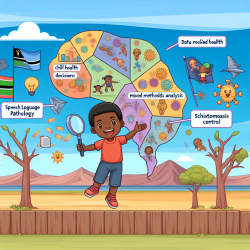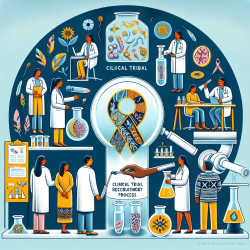The recently published research article, "A mixed method analysis of the Botswana schistosomiasis control policy and plans using the policy triangle framework," provides critical insights that can be transformative for practitioners involved in child health. This blog aims to highlight key findings from the study and suggest practical ways to implement these insights to improve outcomes for children.
Key Insights from the Research
The study utilized a mixed-method approach to analyze Botswana's schistosomiasis control policies, focusing on the Ngamiland district. Here are the essential takeaways:
- Clear Objectives and Targets: The study found that the Ngamiland control policy had well-defined objectives and targets, particularly in morbidity control through Mass Drug Administration (MDA) in schools.
- Centralized Implementation: The policy was primarily implemented by the Ministry of Health (MOH) and the World Health Organization (WHO), with minimal involvement from local communities and other stakeholders.
- Lack of Resources: The implementation process was hindered by a lack of domestic resources and comprehensive policy content on snail control.
- Need for Broader Inclusion: The policy focused predominantly on school-aged children (SAC) and lacked guidelines for other at-risk groups such as preschool-aged children.
Implementing Insights to Improve Child Health Outcomes
Based on the findings, here are some actionable steps practitioners can take:
1. Broaden Stakeholder Involvement
The study highlights the importance of involving local communities, NGOs, and other stakeholders in the policy implementation process. Practitioners should:
- Engage local communities through awareness campaigns and educational programs.
- Collaborate with NGOs and private sectors to pool resources and expertise.
2. Focus on Comprehensive Policy Content
A well-rounded policy should include environmental control measures and guidelines for various at-risk groups. Practitioners can:
- Advocate for the inclusion of snail control measures in policy frameworks.
- Ensure that policies cover all at-risk groups, including preschool-aged children and adults.
3. Secure Sustainable Funding
Lack of resources was a significant barrier to effective policy implementation. To address this, practitioners should:
- Seek funding from multiple sources, including government grants, international aid, and private donations.
- Develop a sustainable financial plan that includes long-term resource allocation for disease control programs.
4. Enhance Monitoring and Evaluation
Effective monitoring and evaluation (M&E) are crucial for the success of any health program. Practitioners should:
- Implement robust M&E systems to track the progress of interventions.
- Use data-driven decisions to refine and improve policy implementation continually.
Encouraging Further Research
The research underscores the need for ongoing studies to adapt and improve schistosomiasis control policies. Practitioners should:
- Encourage academic and field research to fill knowledge gaps.
- Participate in or initiate research projects to gather localized data that can inform policy changes.
Conclusion
Implementing the insights from the Botswana schistosomiasis control policy can significantly improve health outcomes for children. By broadening stakeholder involvement, focusing on comprehensive policy content, securing sustainable funding, and enhancing monitoring and evaluation, practitioners can make a substantial impact.To read the original research paper, please follow this link:
A mixed method analysis of the Botswana schistosomiasis control policy and plans using the policy triangle framework.










